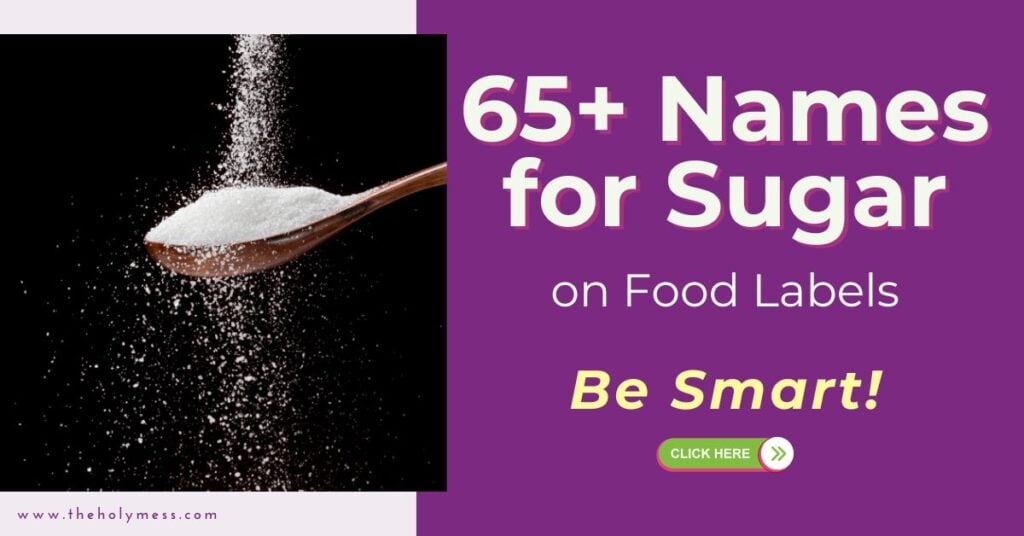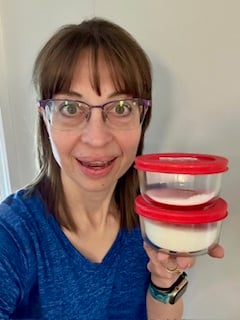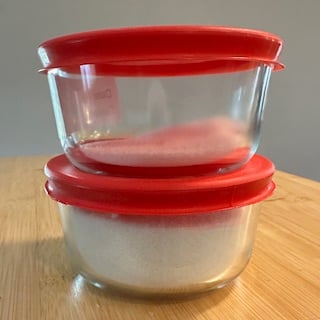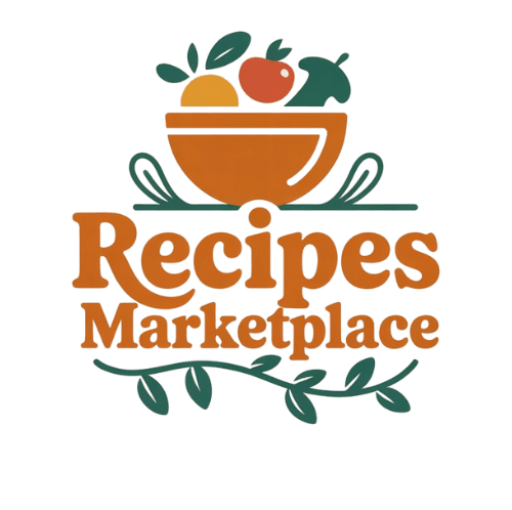If you feel like food labels are written in a foreign language, you’re not alone. Manufacturers use more than 65 names for sugar on food labels, and many of them are designed to sound healthier than they are.
With this guide, you’ll learn to spot sneaky sugars and become the sugar detective you need to be to make informed choices, especially if weight loss or better health is your goal.

Key Take-Aways about Sugar
- Sugar goes by many names. There are more than 65 names for sugar, so most people don’t realize how often it’s hiding in foods they consider healthy.
- “Natural” sugars are still sugar. Natural sweeteners like honey, maple syrup, and coconut sugar still count as added sugar and impact your weight, energy, and blood sugar just like regular table sugar.
- Read the ingredient list thoroughly. Manufacturers often list multiple types of sugar to keep any one from appearing high on the ingredient list, making the product seem lower in sugar than it really is.
- Learn to read nutrition labels. The “Added Sugars” line on the Nutrition Facts label is the most honest indicator of how much sugar was included during processing.
65+ Names for Sugar on Food Labels
Don’t be fooled by clever wording. These are all sneaky names for added sugar that show up on ingredient lists. Some, like brown rice syrup or coconut sugarappear wholesome, but they are far from good for you.
- Agave nectar
- Agave Syrup
- Any fruit juice concentrate
- Apple juice concentrate
- Barbados sugar
- Barley malt syrup
- Beet sugar
- Blackstrap molasses
- Brown rice syrup
- Brown sugar
- Buttered syrup
- Cane juice crystals
- Cane sugar
- Cane syrup
- Carob syrup
- Castor sugar
- Coconut sugar
- Confectioner’s glaze (sometimes used in coatings)
- Confectioners’ sugar
- Corn syrup
- Corn syrup solids
- Crystalline fructose
- Date sugar
- Demerara sugar
- Dextrin
- Dextrose
- Diastatic malt
- Ethyl maltol
- Evaporated cane juice
- Evaporated cane syrup
- Florida crystals
- Fructose
- Fruit juice (when used as a sweetener)
- Fruit juice concentrate
- Fruit nectar
- Galactose
- Glucose
- Glucose syrup
- Golden sugar
- Golden Syrup
- Grape juice concentrate
- Grape sugar
- High-fructose corn syrup
- Honey
- Honey crystals
- Honey powder
- Invert sugar
- Isomaltose
- Lactose
- Malt Syrup
- Maltodextrin
- Maltose
- Mannose
- Maple syrup
- Molasses
- Muscovado sugar
- Organic cane juice
- Organic raw sugar
- Palm sugar
- Pan
- Panocha
- Pear juice concentrate
- Powdered sugar
- Raw sugar
- Refiner’s syrup
- Rice malt
- Rice syrup
- Sucrose
- Sorghum Syrup
- Sucanat
- Sucrose
- Sugar
- Treacle
- Trehalose
- Turbocharged
- Turbine Sugar
- Yellow sugar
How Much Sugar Should I Be Eating?
Before you worry about how much sugar you should be eating, it’s important to take an honest look at how much you’re consuming right now. Many women are surprised to learn they’re eating far more than they realize, not just from sweets, but from everyday foods like sauces, bread, and drinks.
The American Heart Association recommends no more than 25 grams (6 teaspoons) of added sugar per day for women, but most of us are far exceeding that without even knowing it.


Facts about American Sugar Consumption


- The American Heart Association recommends that women consume no more than 6 teaspoons (25 grams or 100 calories) of sugar per day.
- Reducing your daily sugar consumption supports your weight loss goals by lowering your overall calorie intake.
Heart Check with Terry: Many people ignore beverages as a source of sugar in their diet. A 12-ounce can of regular soda contains 10 teaspoons (42 grams) of added sugar. That’s almost double the recommended daily amount for women. Take a look at what you’re drinking throughout the day, including sweet tea and coffee creamer.
How Sugar Affects Your Health
Sugar isn’t just a weight loss issue. It affects nearly every system in your body.
- Weight Gain and Belly Fat – Added sugars pack in empty calories that don’t fill you up, making it easy to overeat. High-sugar diets are directly linked to weight gain and belly fat, which is especially dangerous because it increases your risk for chronic diseases.
- Insulin Resistance and Diabetes Risk – Frequent sugar spikes cause your body to release more insulin. Over time, your cells stop responding, leading to insulin resistance, which is a precursor to type 2 diabetes.
- Fatty Liver – Excess sugar (especially fructose) is processed by the liver and can lead to fat buildup. This increases your risk of non-alcoholic fatty liver disease, even if you don’t drink alcohol.
- Heart Health – Too much sugar raises your blood pressure, increases inflammation, and boosts levels of triglycerides and LDL (“bad”) cholesterol, all of which raise your risk for heart disease.
- Brain and Mood – High-sugar diets are linked to brain fog, poor memory, and a higher risk of depression. Sugar may give you a quick high, but it often leads to an emotional and physical crash later.
Heart Check with Terry: I’m not here to scare you, but I do want you to be informed. Sugar doesn’t just affect your weight. It impacts your energy, your mood, your skin, and even your risk for serious disease. The good news? Every small step you take to cut back makes a difference.
Types of Sugar on Ingredients Lists
Food labels rarely just say “sugar”. Here are some of the most commonly used names for sugar, organized by category to help you spot them more easily on ingredient labels.
Some names for sugar, like brown rice syrup or coconut sugarappear wholesome, but they are still sugar. With awareness, you can make informed decisions about your food choices.
Names for Sugar
- Barbados sugar
- Beet sugar
- Brown sugar
- Cane sugar
- Castor sugar
- Coconut sugar
- Confectioners’ sugar
- Golden sugar
- Grape sugar
- Invert sugar
- Muscovado sugar
- Palm sugar
- Powdered sugar
- Raw sugar
- Sugar
- Turbine Sugar
Sugar Syrups
Sticky and sweet, these liquid sugars are frequently used in processed foods to enhance flavor and shelf life.
- Agave nectar or agave syrup
- Barley malt syrup
- Brown rice syrup
- Cane syrup
- Carob syrup
- Corn syrup
- Corn syrup solids
- Fruit juice concentrate
- Glucose syrup
- Golden Syrup
- High-fructose corn syrup
- Honey
- Malt Syrup
- Maple syrup
- Refiner’s syrup
- Rice syrup
- Sorghum Syrup
- Treacle
Sugars Ending in “-ose”
The “-ose” ending is a clue that the ingredient is a type of sugar molecule, often used in processed foods.
- Crystalline fructose
- Dextrose
- Fructose
- Galactose
- Glucose
- Isomaltose
- Lactose
- Maltose
- Mannose
- Sucrose
- Sucrose
- Trehalose
Other Names for Sugar
- Blackstrap molasses
- Buttered syrup
- Cane juice crystals
- Date sugar
- Demerara sugar
- Dextrin
- Diastatic malt
- Ethyl maltol
- Evaporated cane juice
- Evaporated cane syrup
- Florida crystals
- Fruit juice (when used as a sweetener)
- Fruit nectar
- Honey powder
- Maltodextrin
- Molasses
- Muscovado sugar
- Pan
- Panocha
- Sucanat
Concentrates and Reductions
Despite the “natural” label, these sugars are highly refined and far removed from how they appear in nature.
- Apple juice concentrate
- Grape juice concentrate
- Pear juice concentrate
- Any fruit juice concentrate
Other Names for Sugar in Ingredients
- Confectioner’s glaze (sometimes used in coatings)
- Golden sugar
- Honey crystals
- Organic cane juice
- Organic raw sugar
- Rice malt
- Turbocharged
- Yellow sugar
Top 7 Tips to Find Hidden Sugar on Food Labels
Here is more helpful guidance when it comes to figuring out food labels.
- Ingredients are listed in order by weight. If sugar (or one of its many names) is in the top 3 to 5, that product is likely loaded with it.
- Food companies know you’re watching, so they’ll use several different types of sugar to avoid having it show up at the top of the list.
- Look at the Nutrition Facts “Added Sugars” line on the label. Under “Total Sugars”, you’ll see “Includes Xg Added Sugars”. That’s the number you want to watch.
- A good rule of thumb is to try to keep added sugar under 6 to 10 grams per serving (or less, depending on your goals).
- When checking labels, also look for ingredients ending in “-ose” and words like “syrup,” “nectar,” “crystals,” “concentrate,” or “malt.”
- Even natural sources like honey or fruit concentrates can act just like added sugar in your body.
- Names for sugar can have long, scientific names like maltodextrin or cane juice crystals that hide their true identity, and you may not realize you are consuming sugar at all.
Heart Check with Terry: Check the serving size closely. A small number might be based on a tiny portion. If you eat twice the serving, you’re also getting twice the sugar. Example: A serving of cereal may say 8g added sugar, but if you pour a big bowl? You’re easily at 16g or more.
Including Sugar in a Healthy Diet
Let’s be honest. Cutting sugar completely isn’t realistic for most of us, and it doesn’t have to be. You don’t need to swear off birthday cake forever or feel guilty for enjoying something sweet now and then. The goal isn’t perfection. The goal is awareness and balance.
Inside The Holy Mess Weight Loss Membershipwe’ve been walking through this together during our Cut the Sugar Challenge. Members are learning how to track added sugars, go through a no-sugar reset, and then reintroduce sugar with clear personal guidelines. Instead of restriction, our focus is on making informed and intentional choices.
The truth is, you can include sugar in your diet and still lose weight. But it works best when:
- You know where your sugar is coming from.
- You set your own limits, not just follow someone else’s rules.
- You pay attention to how sugar affects your body, energy, and cravings.
Heart Check with Terry: I’m not aiming for perfection, and I don’t expect you to either. However, I am aiming for peace, which comes from making intentional choices, rather than living with guilt or adhering to all-or-nothing rules. Sugar doesn’t have to control you. With awareness and a plan, you can stay in charge.
Zero Sugar Recipes
The Holy Mess 7-Day Anti-Inflammatory Weight Loss Meal Plan – Except for a tiny bit of honey in one or two recipes, naturally sugar- and sweetener- free
The Holy Mess 3-Day Meal Plan – No sugar or sweetener, free
The Holy Mess 14-Day Whole Foods Meal Plan – Free, good for WW members or not. Remove honey from a couple recipes.
Help for Managing Sugar Cravings
7 Tricky Warning Signs You Are Addicted to Sugar
43 Names for Artificial Sweetener on Food Labels
20 Ways to Feel Better Without Overeating
Trigger Foods: 4 Steps to Food Freedom
Food Addiction: Find Food Freedom by God’s Power

